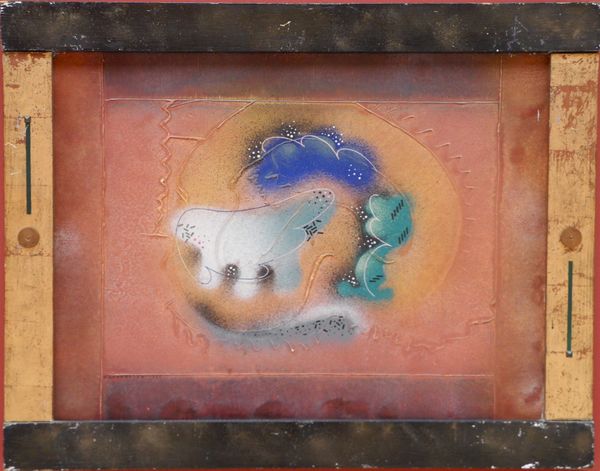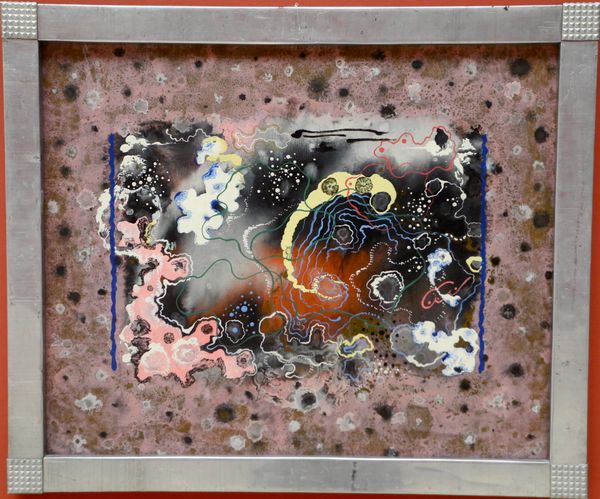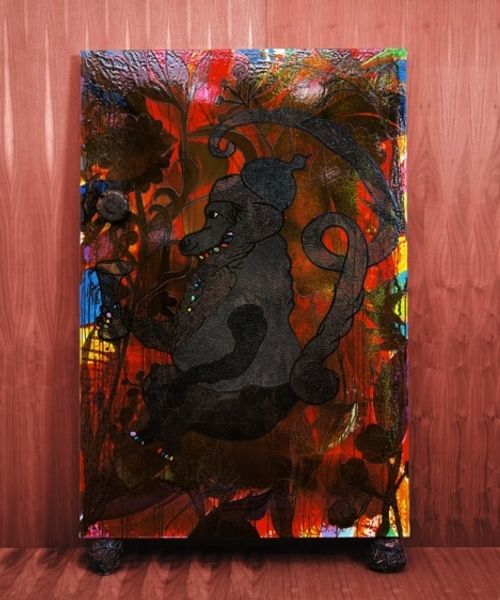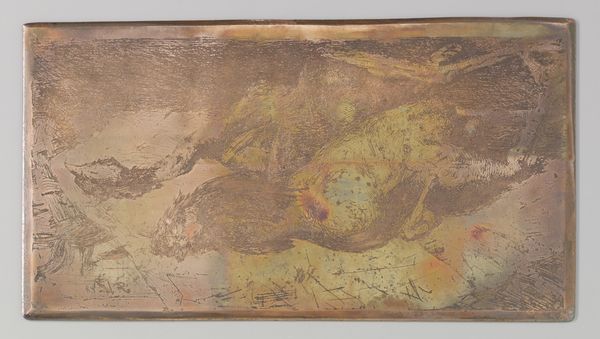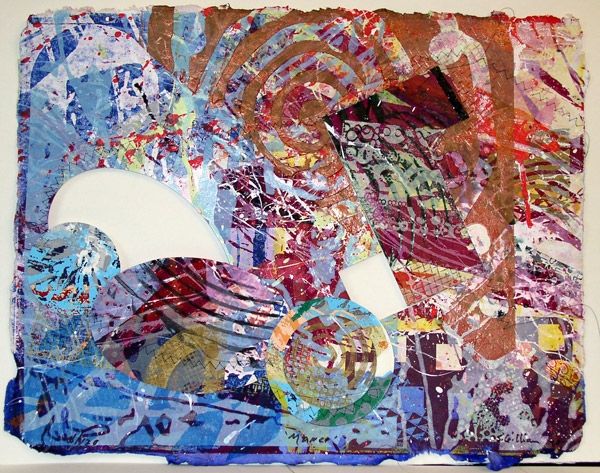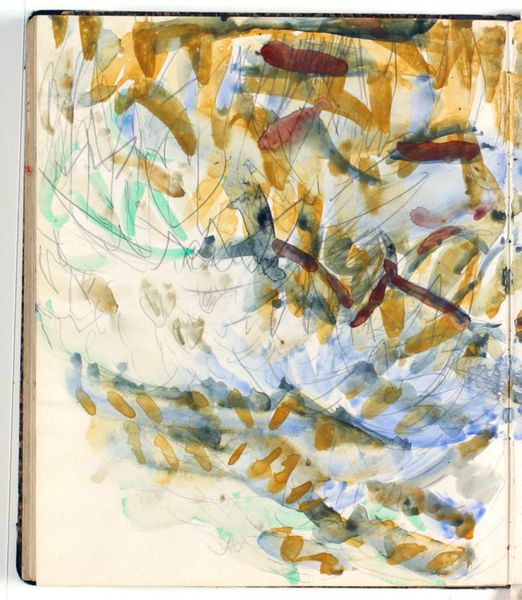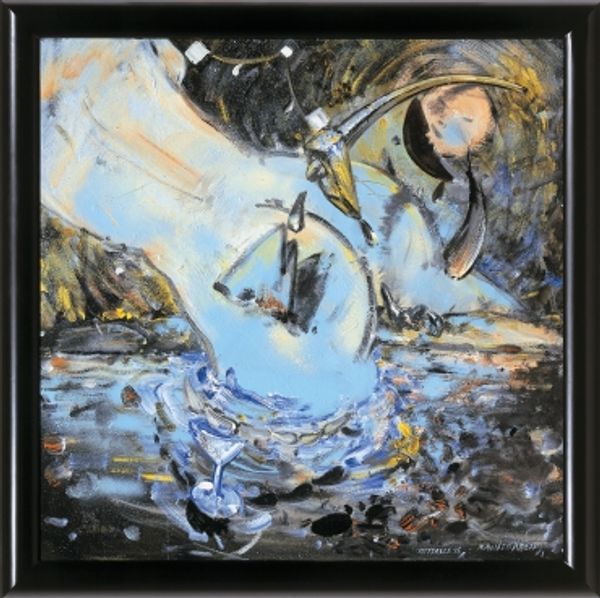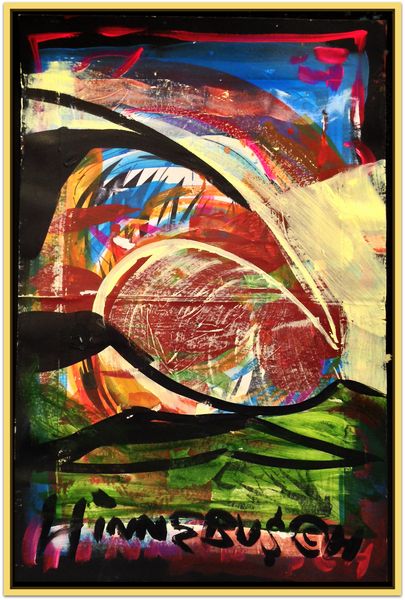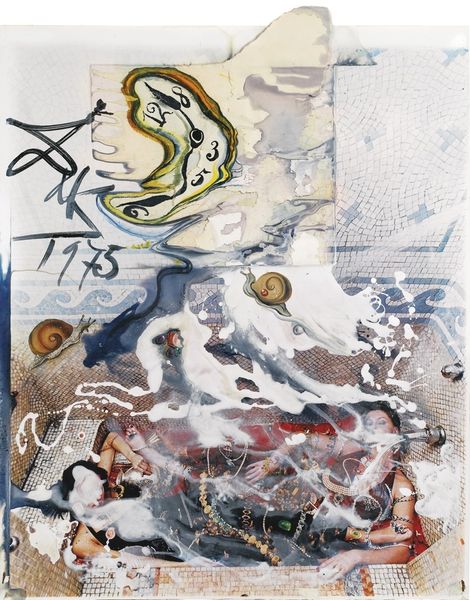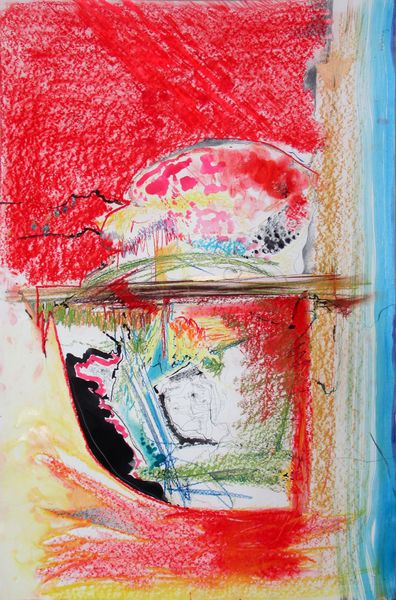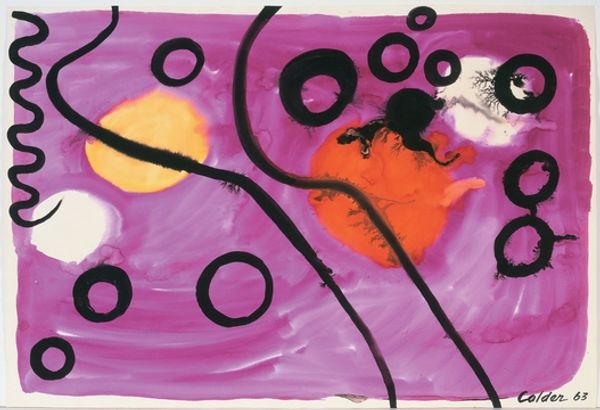
painting, oil-paint
#
abstract painting
#
painting
#
oil-paint
#
handmade artwork painting
#
oil painting
#
geometric-abstraction
#
abstraction
#
modernism
Dimensions: 57 x 67 cm
Copyright: David Kakabadze,Fair Use
Editor: This is David Kakabadze’s "Abstraction," painted in 1927. It’s an oil painting, and the overall effect is quite striking, a jumble of shapes that somehow create a sense of depth. How do you interpret this work in relation to the artistic landscape of the time? Curator: It's fascinating to consider this "Abstraction" in its socio-political context. 1927 was a pivotal year. Kakabadze was working within a shifting ideological landscape in the Soviet Union. His move toward abstraction was, in some ways, a rebellion against the prescribed artistic style of Socialist Realism. Can you see hints of figuration struggling to emerge? Editor: I think so, yes. The darker shapes hint at profiles perhaps, and there is movement. So, was embracing abstraction a kind of political statement itself at the time, or just artistic exploration? Curator: It was both, often intertwined! To abandon clear representation was a way of resisting the state's control over imagery and its use as propaganda. Yet, at the same time, Kakabadze and other artists were genuinely exploring the boundaries of visual language, influenced by European Modernism, yet with a uniquely Georgian sensibility. Do you notice any color palettes or techniques here unique to the region? Editor: Well, the layering and earthy tones seem…distinct, especially combined with those scattered bright white dots. I wouldn't immediately think "Soviet propaganda." It's more intimate, almost cosmological in feel. Curator: Precisely. That tension between the individual artistic vision and the collective, state-mandated aesthetic is what makes this period so rich and complex. The museum exhibiting this work now helps define and shape Kakabadze's lasting legacy. Editor: It's interesting to think about the political charge abstraction could have had. I see how the display itself shapes meaning. Curator: Exactly, and shapes our understanding. Every element contributes.
Comments
No comments
Be the first to comment and join the conversation on the ultimate creative platform.
